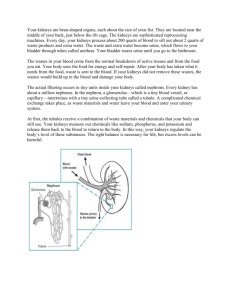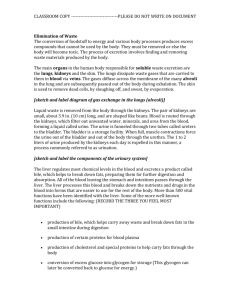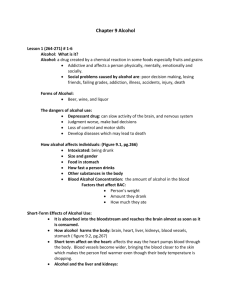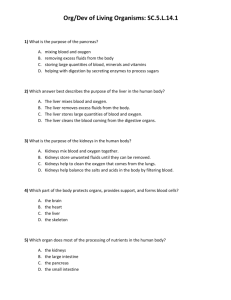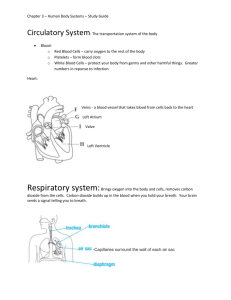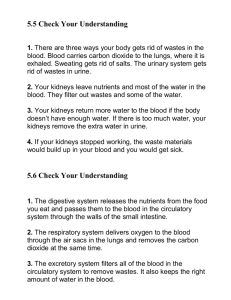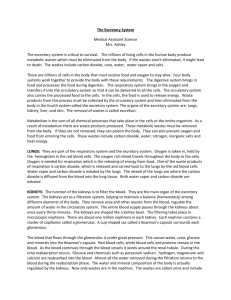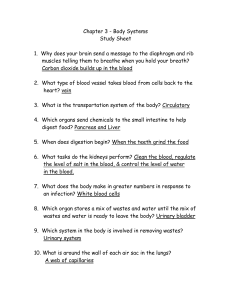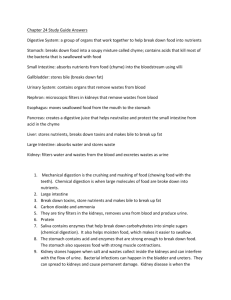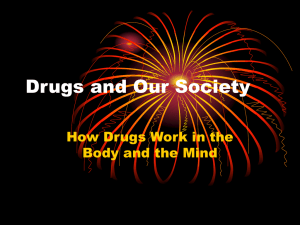File
advertisement
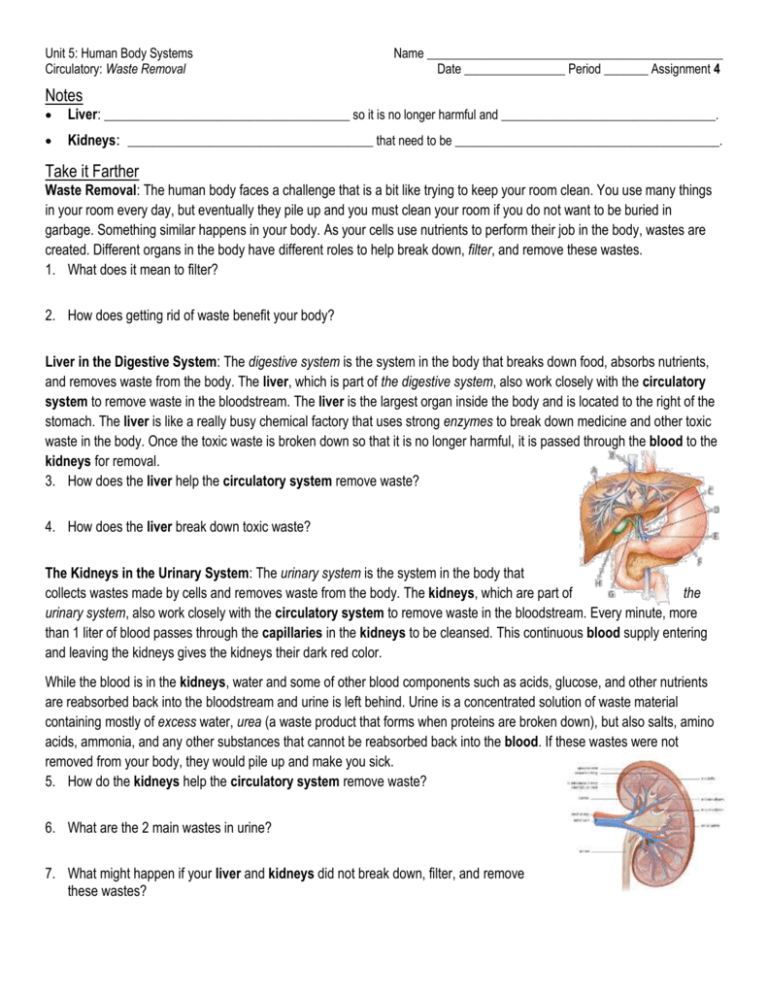
Unit 5: Human Body Systems Circulatory: Waste Removal Name _______________________________________________ Date ________________ Period _______ Assignment 4 Notes Liver: _______________________________________ so it is no longer harmful and __________________________________. Kidneys: _______________________________________ that need to be __________________________________________. Take it Farther Waste Removal: The human body faces a challenge that is a bit like trying to keep your room clean. You use many things in your room every day, but eventually they pile up and you must clean your room if you do not want to be buried in garbage. Something similar happens in your body. As your cells use nutrients to perform their job in the body, wastes are created. Different organs in the body have different roles to help break down, filter, and remove these wastes. 1. What does it mean to filter? 2. How does getting rid of waste benefit your body? Liver in the Digestive System: The digestive system is the system in the body that breaks down food, absorbs nutrients, and removes waste from the body. The liver, which is part of the digestive system, also work closely with the circulatory system to remove waste in the bloodstream. The liver is the largest organ inside the body and is located to the right of the stomach. The liver is like a really busy chemical factory that uses strong enzymes to break down medicine and other toxic waste in the body. Once the toxic waste is broken down so that it is no longer harmful, it is passed through the blood to the kidneys for removal. 3. How does the liver help the circulatory system remove waste? 4. How does the liver break down toxic waste? The Kidneys in the Urinary System: The urinary system is the system in the body that collects wastes made by cells and removes waste from the body. The kidneys, which are part of the urinary system, also work closely with the circulatory system to remove waste in the bloodstream. Every minute, more than 1 liter of blood passes through the capillaries in the kidneys to be cleansed. This continuous blood supply entering and leaving the kidneys gives the kidneys their dark red color. While the blood is in the kidneys, water and some of other blood components such as acids, glucose, and other nutrients are reabsorbed back into the bloodstream and urine is left behind. Urine is a concentrated solution of waste material containing mostly of excess water, urea (a waste product that forms when proteins are broken down), but also salts, amino acids, ammonia, and any other substances that cannot be reabsorbed back into the blood. If these wastes were not removed from your body, they would pile up and make you sick. 5. How do the kidneys help the circulatory system remove waste? 6. What are the 2 main wastes in urine? 7. What might happen if your liver and kidneys did not break down, filter, and remove these wastes? System Sort Summarize It! The liver is part of the digestive system and the kidneys are part of the urinary system. However, the liver and kidneys also work together to support the circulatory system. Use at least 2 complete sentences to describe how the liver and kidneys help to remove waste from the body. __________________________________________________________________________________________________ __________________________________________________________________________________________________ __________________________________________________________________________________________________ __________________________________________________________________________________________________
